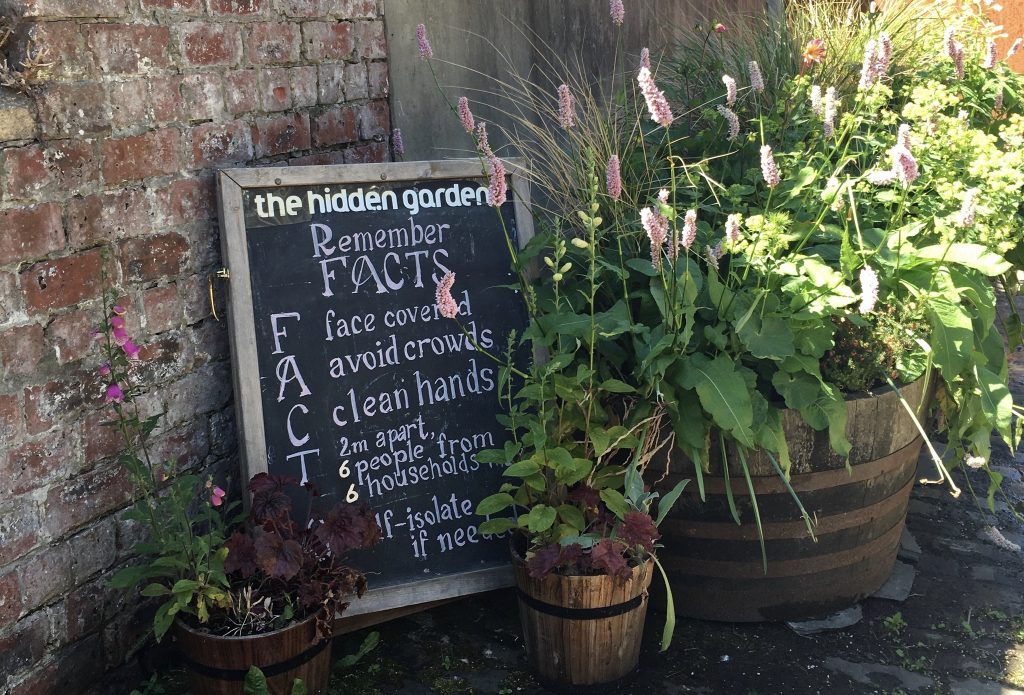We are in the south of Glasgow, an area called Pollokshields, and have followed a painted green line on the road behind Tramway to the entrance of The Hidden Gardens. There, partly obscured behind blooming flower planters, is a chalk board with a beautifully hand-written sign inviting us to ‘Remember FACTS: F face covered, A avoid crowds, C clean hands, T 2m apart, S self-isolate if needed’.

The sign is ‘inviting’ because it is both aesthetically considered and because it requires one to get close enough to see past the flowers and read its detail. It is a sign that asks the viewer properly to engage with it, in order to enact its wishes. This sits in marked contradistinction to more ‘institutional’ or ‘municipal’ messaging signs which tell or demand something of viewer in quite mechanistic terms. Of course, we understand the potential need for such public health messaging but, based on our observations, such signs often seem to have little impact on people’s behaviour around them.
In Glasgow, we have been struck by the relative lack of such municipal signage (in comparison to Newcastle, for example). This has caused us to consider the relationship between ‘formal’ social-distancing messaging and more informal, homemade invitations to abide by the ‘FACTS’ or rules of the places we are encountering.
